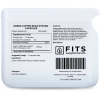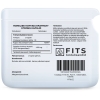Origins of Green Coffee Bean Extract
The Green Coffee Bean is grown on the Coffea plant, or generic Coffee plant. The difference between the familiar brown, and the unfamilar green beans are that they are the immature and unroasted versions. The Coffee plant is native to tropical areas of Africa and Asia, and is best grown in dense evergreen forests. It is a tall plant growing up to 2 to 5 metres, bearing white flowers and red berries. The red berries contain the seed otherwise know as the green coffee bean, which we then extract and use.
Typically, Coffee has be used as a food source and beverage, particularly in the continent of Africa. As Coffee moved to the western world we discovered its health properties and have begun extracting and promoting Coffee as a source of health properties.
Chlorogenic Acid and It's Benefits
It begins with the pure extraction of the Coffee bean from the plant, without roasting. When Coffee beans are roasted they lose their chlorogenic acid (CGA) content, which is responsible for their health giving properties. “Chloro” comes from the Greek meaning “light green” referring to the colour of the bean. CGA is one of the many phenolic acids, it contains caffeic acid, ferulic acid and 3,4-dimethoxycinnamic acid, all bound by ester bonds. Phenolic acids have antioxidant properties which means they help to protect against oxidative stress and damage to proteins, DNA and lipids. CGA has been found to have more antioxidant potency than ascorbic acid (Vitamin C), one of the most well known antioxidants.
















